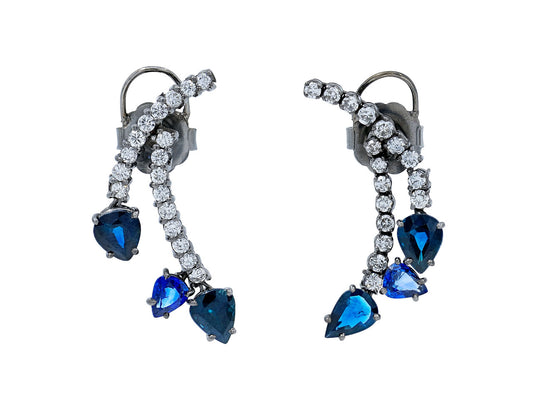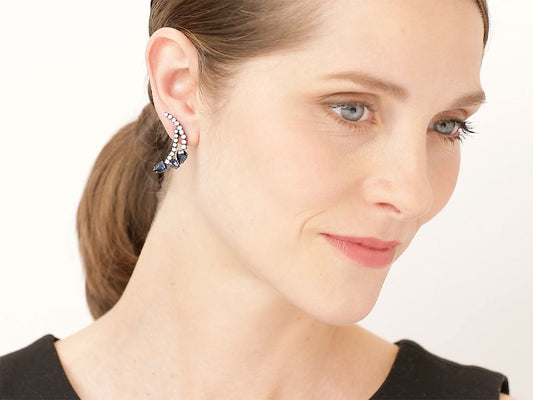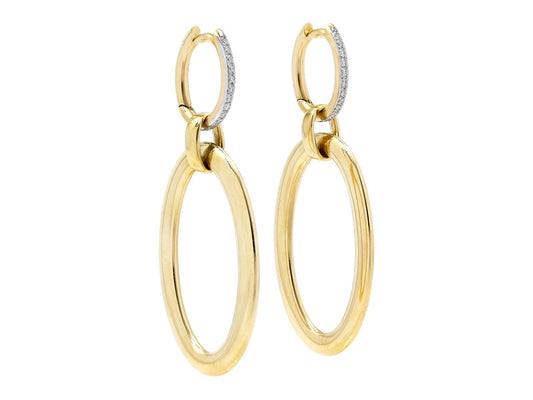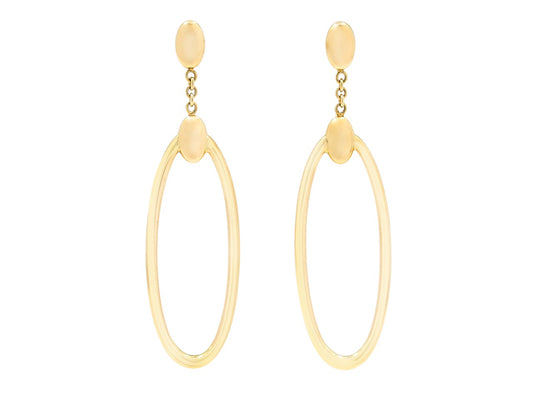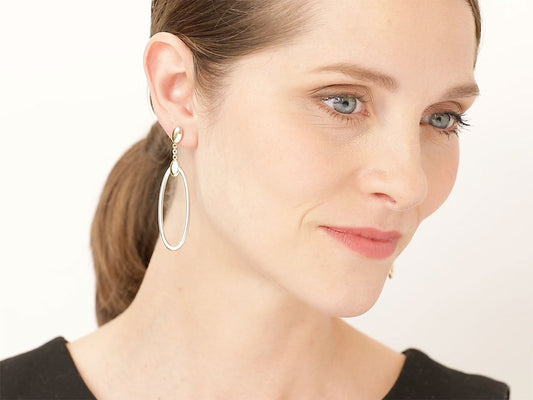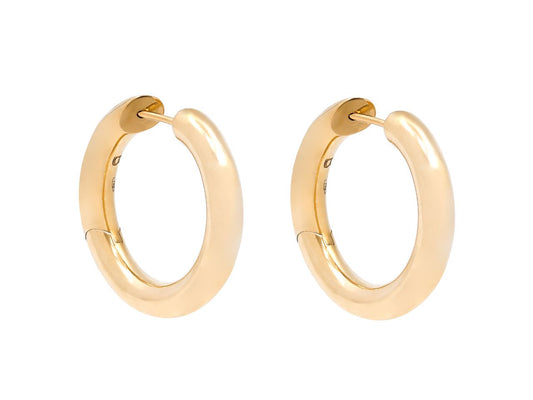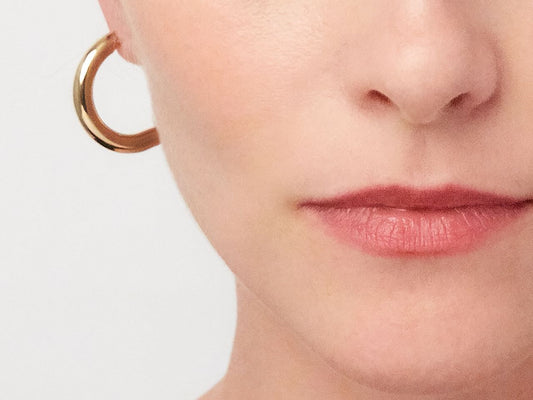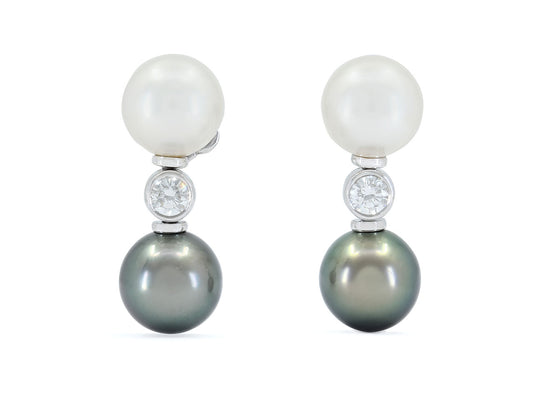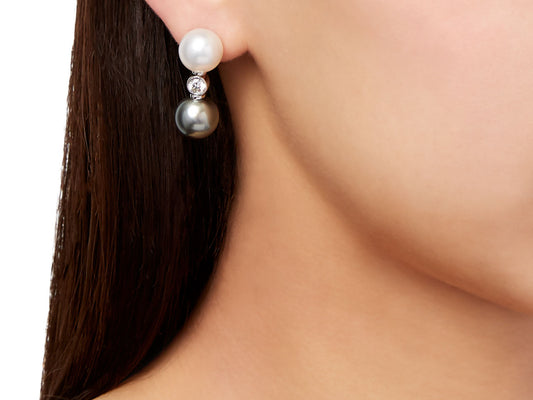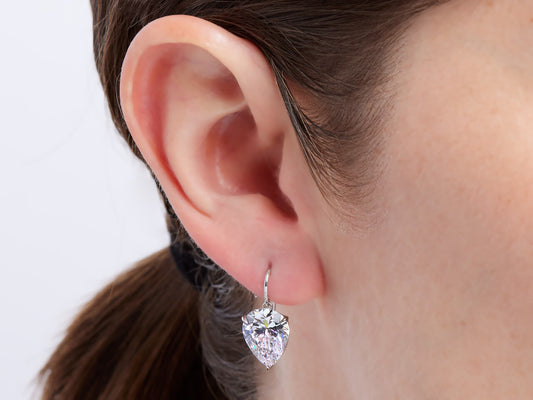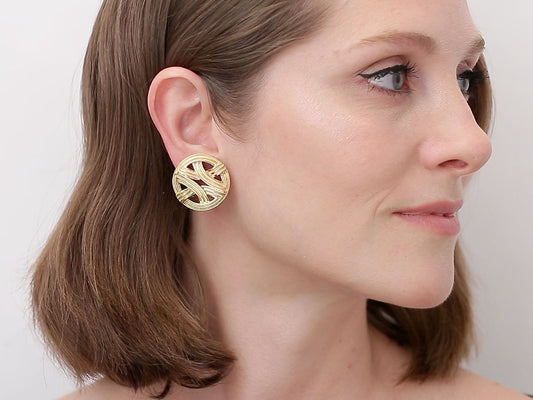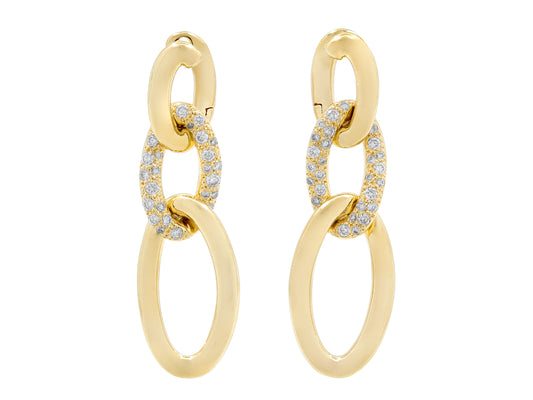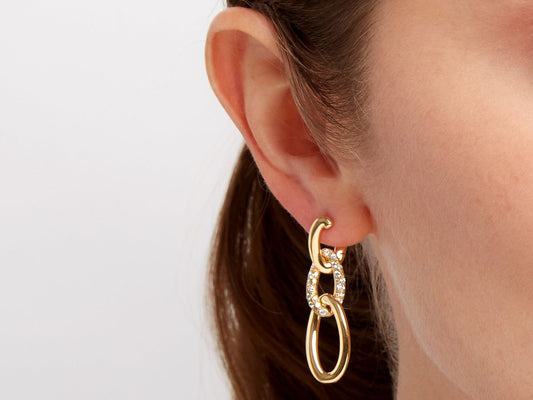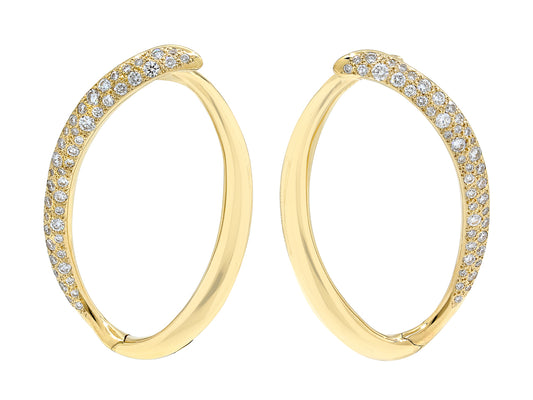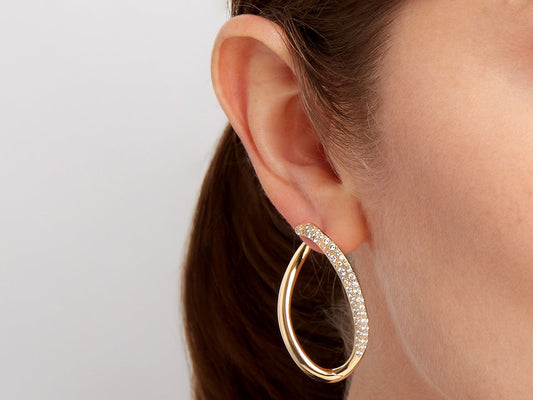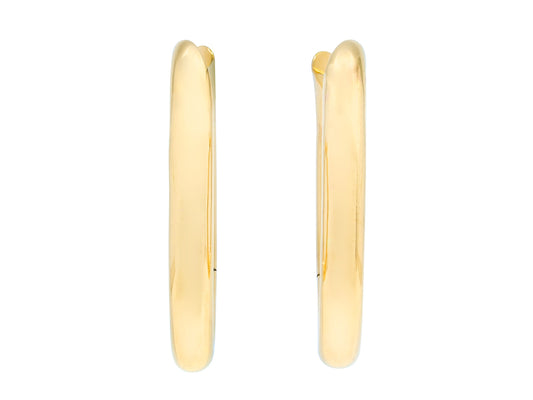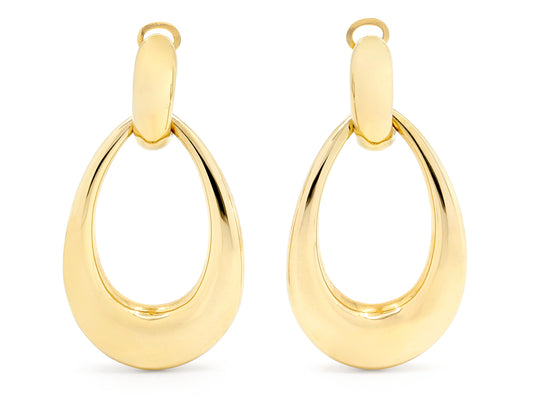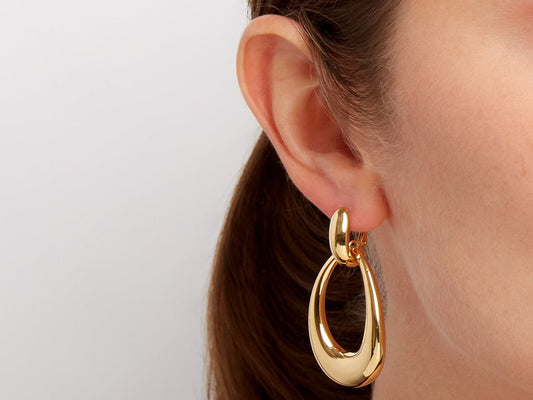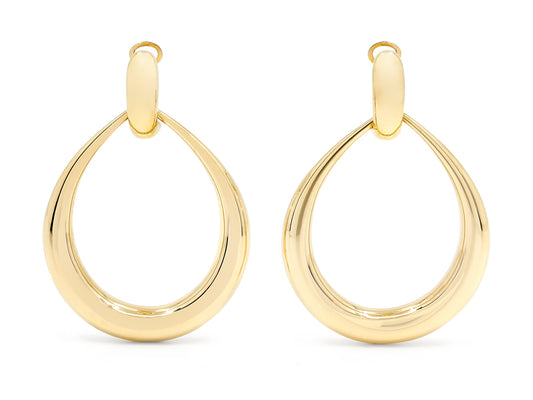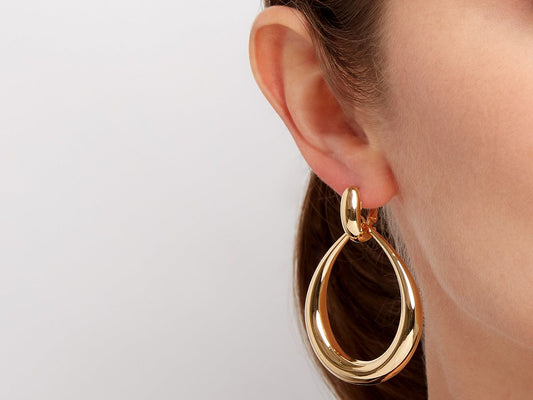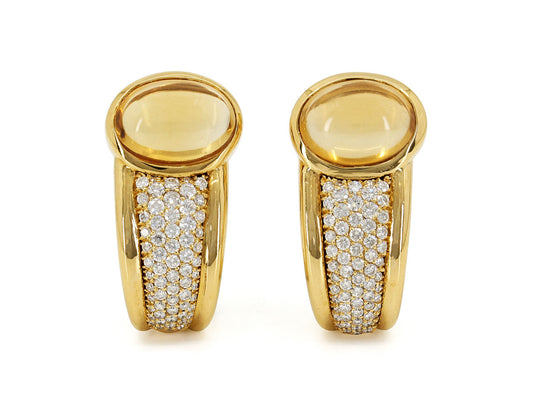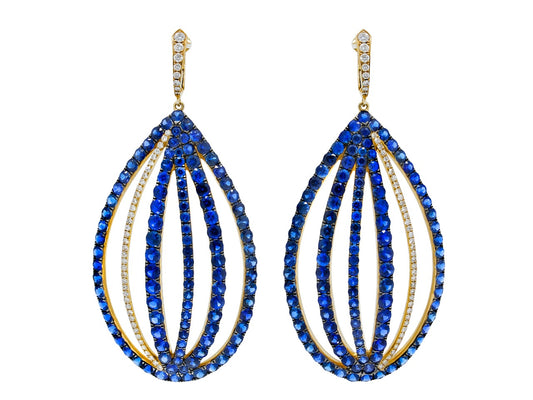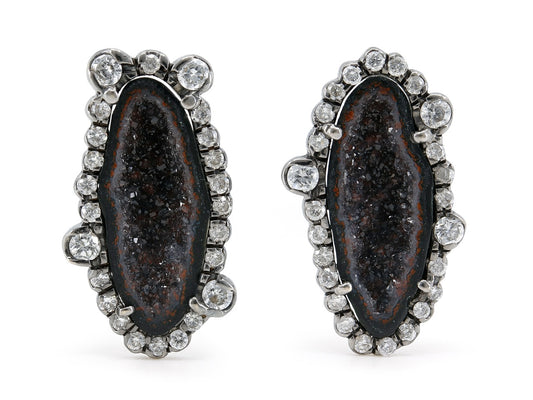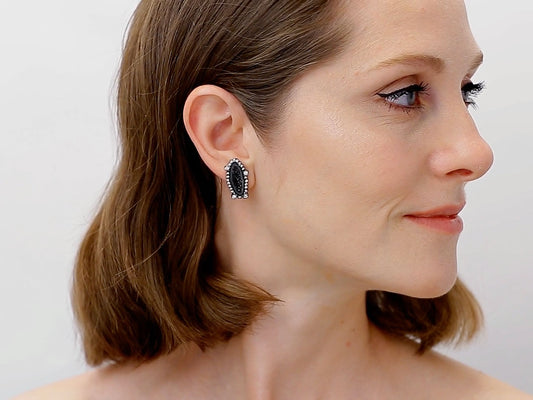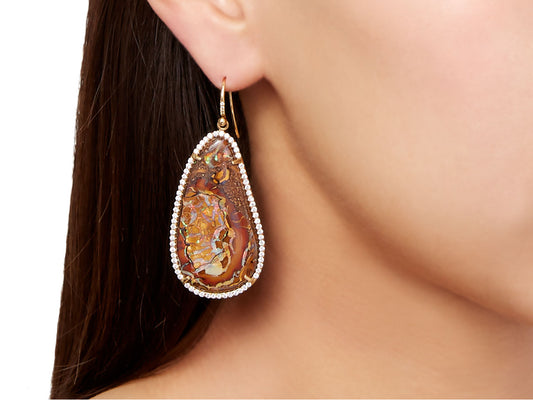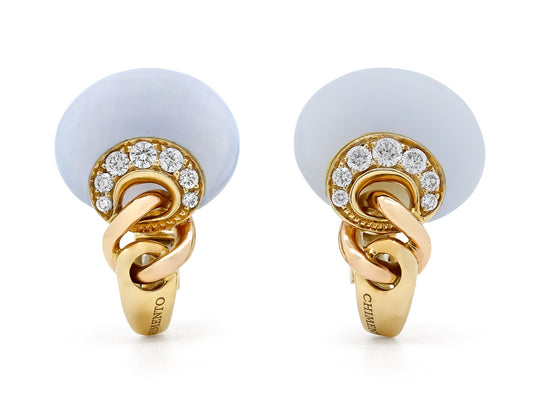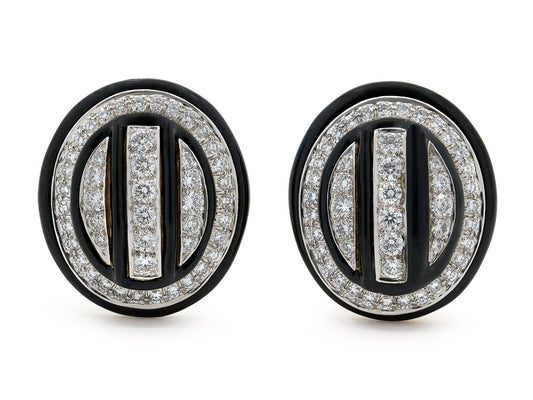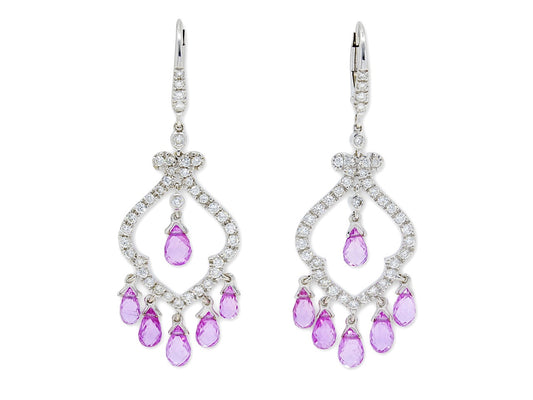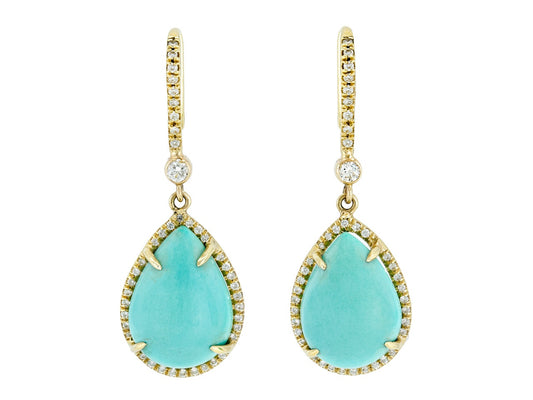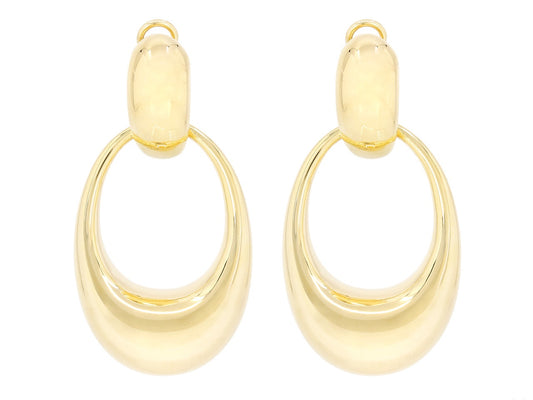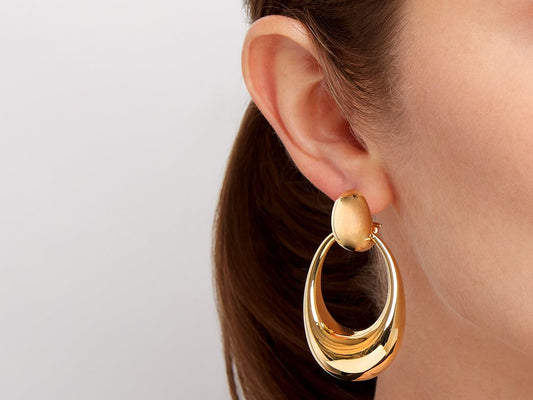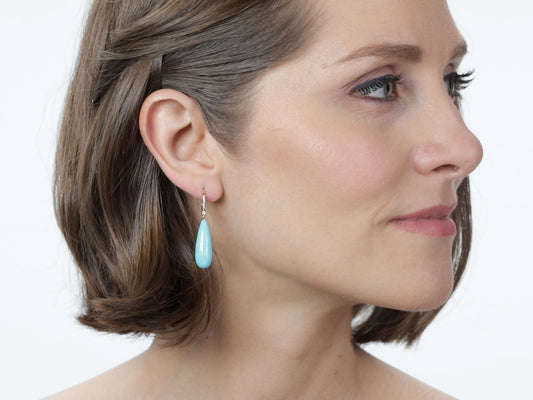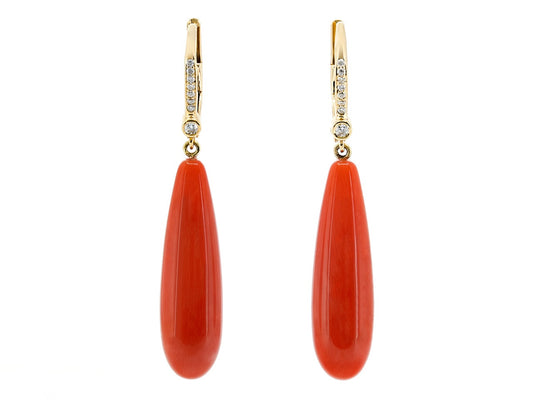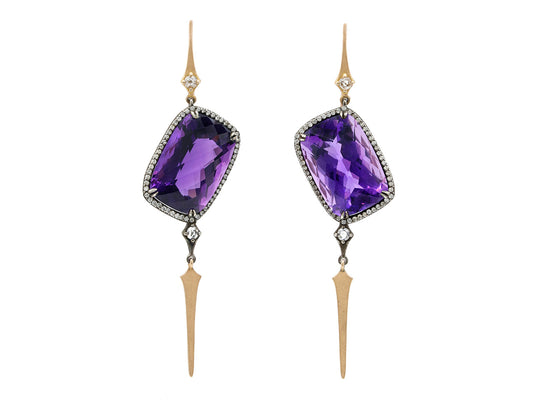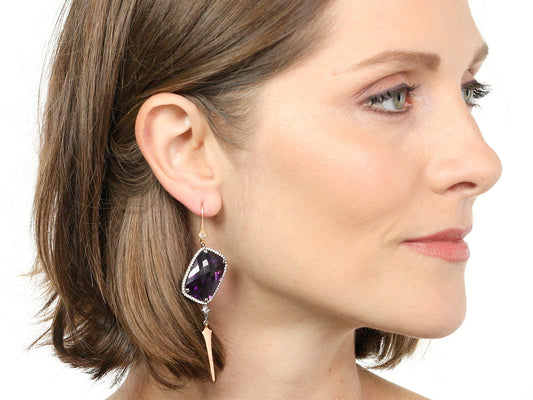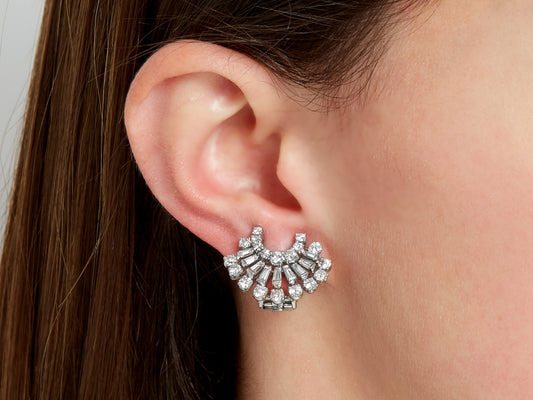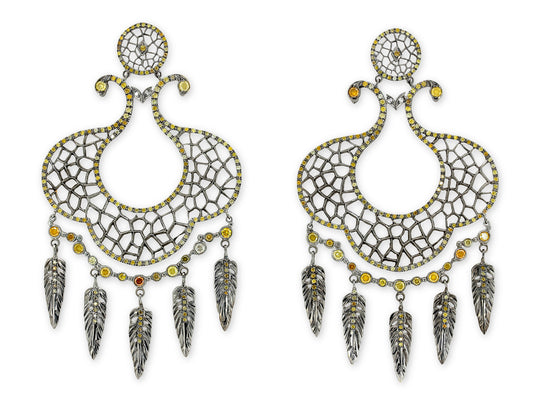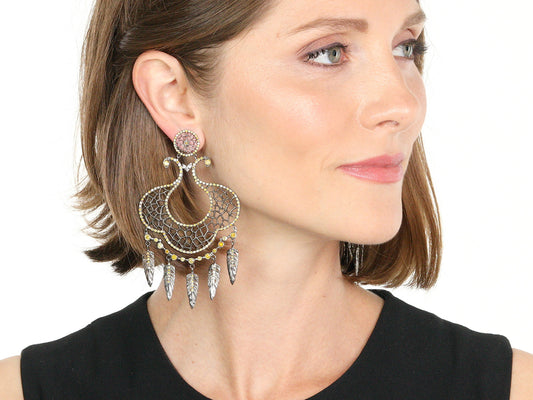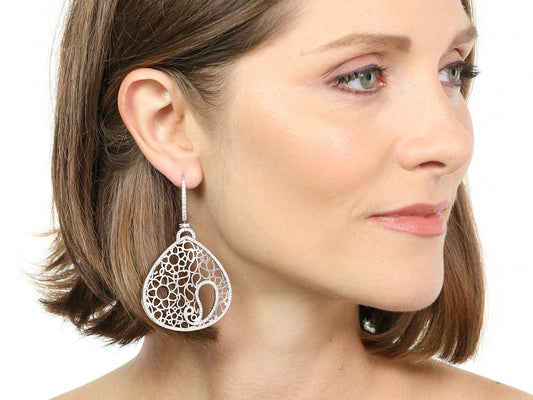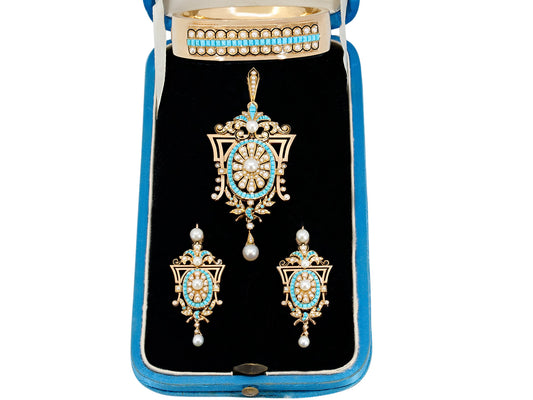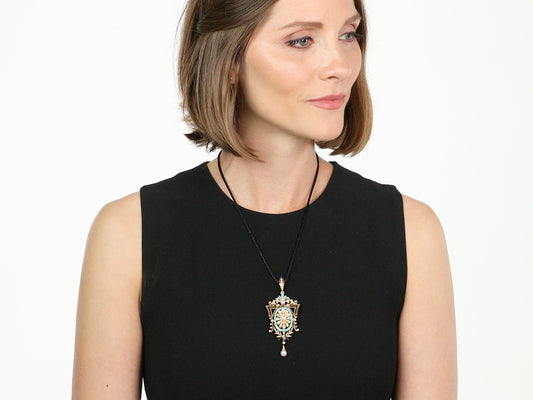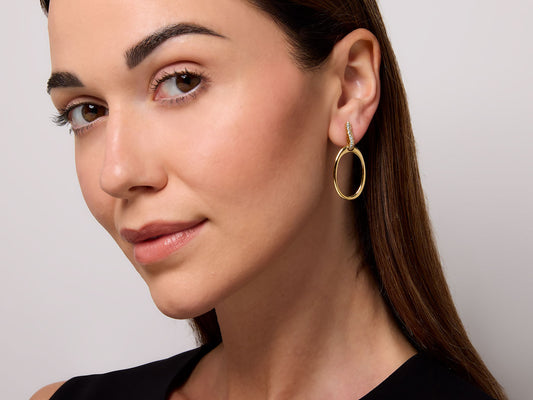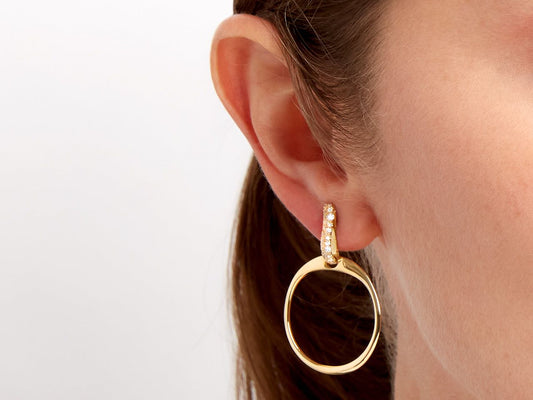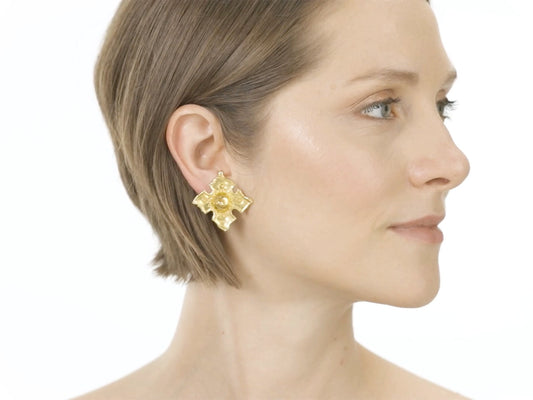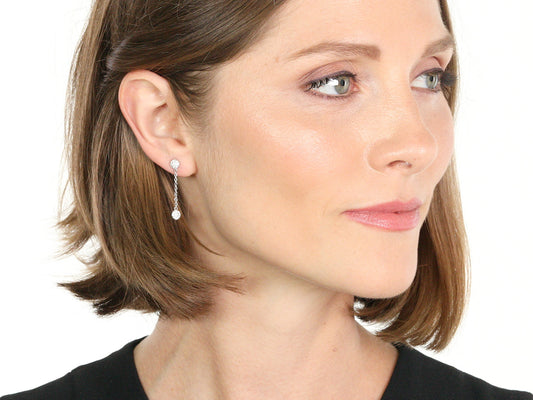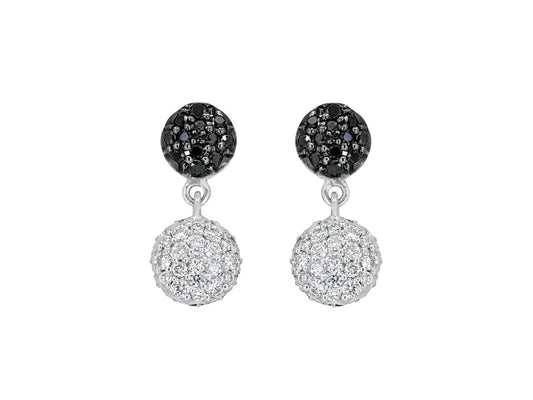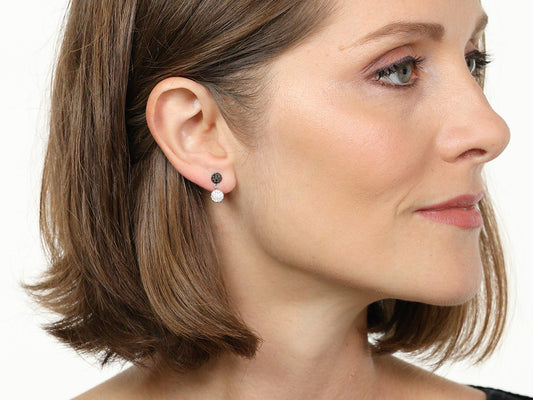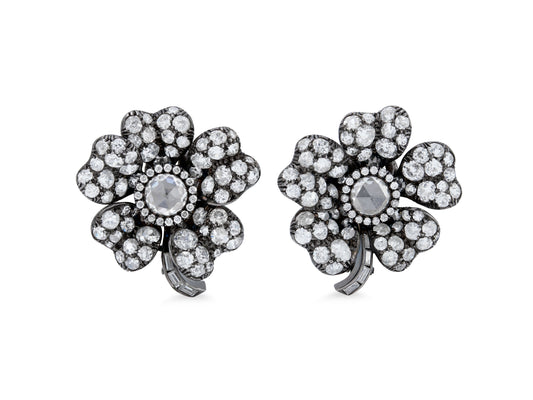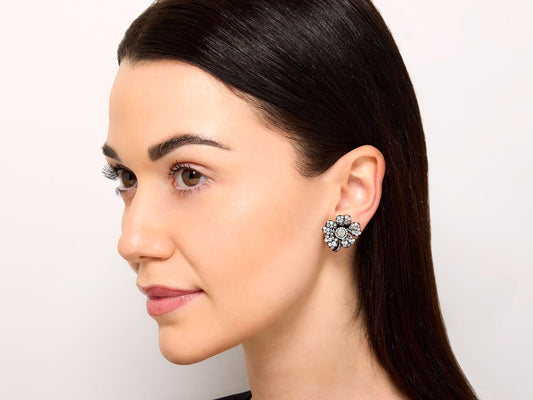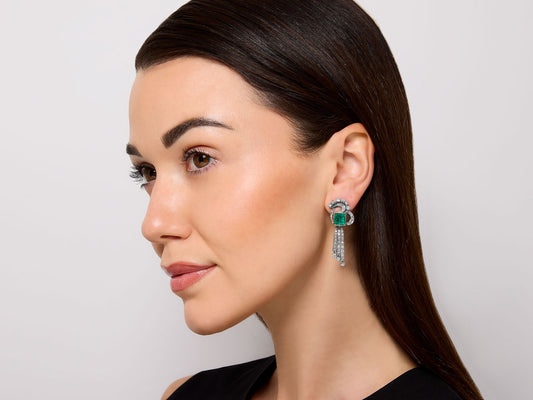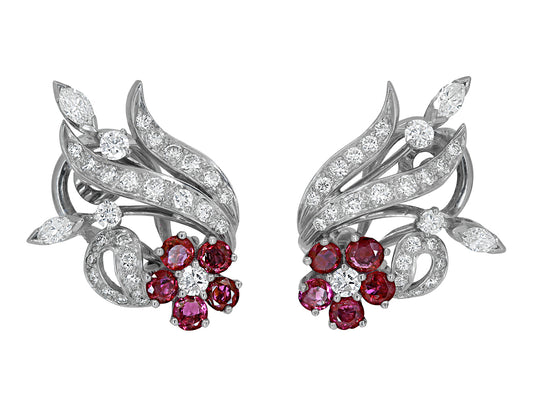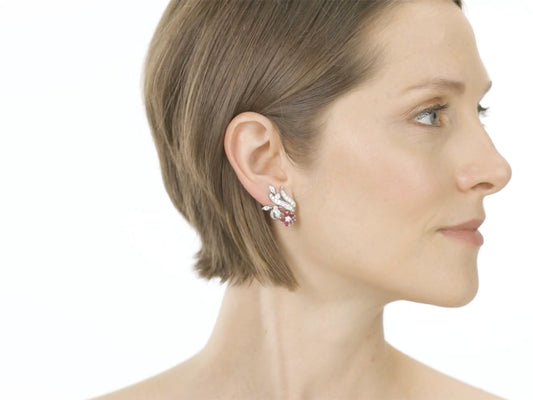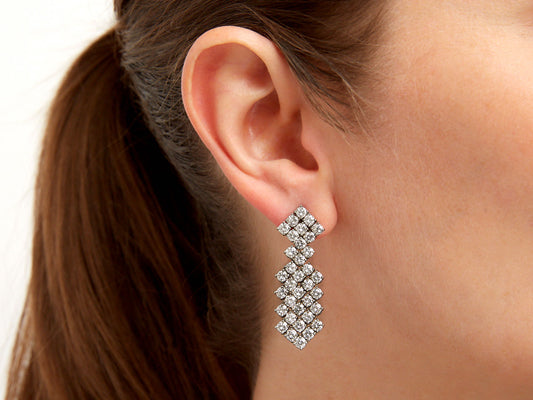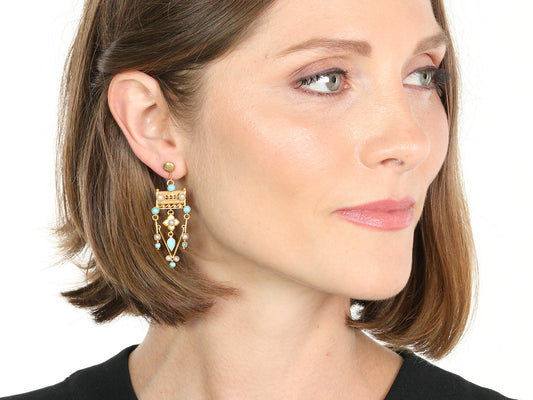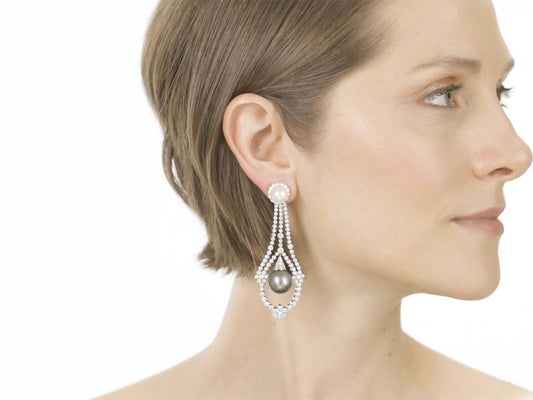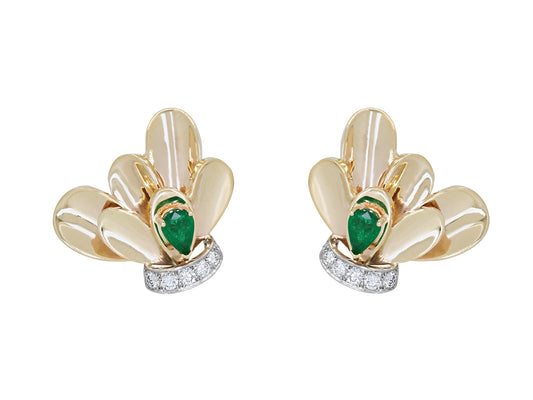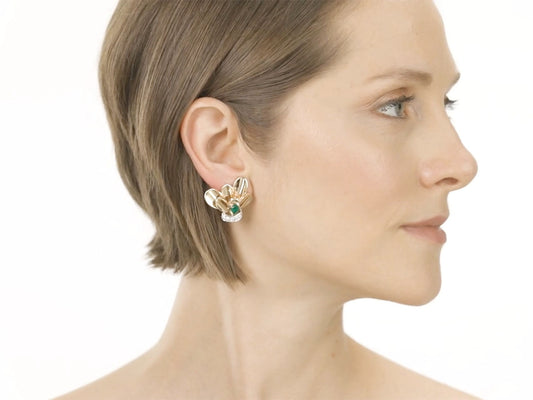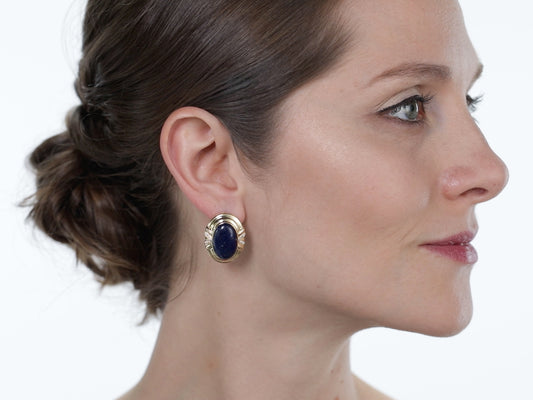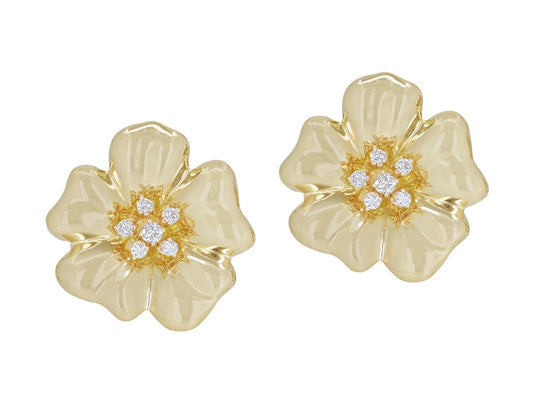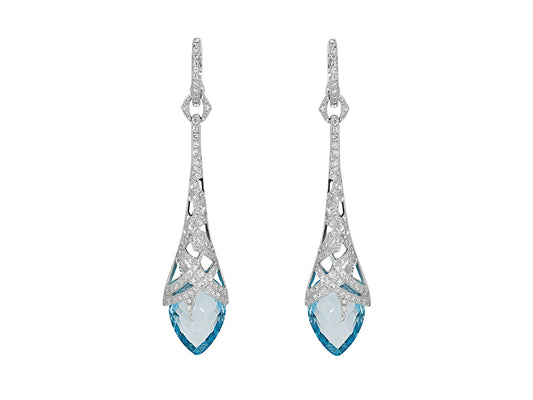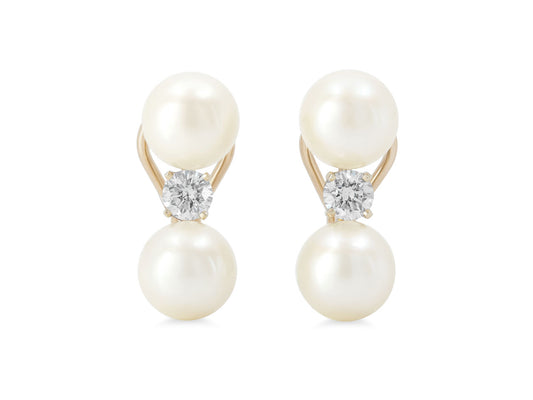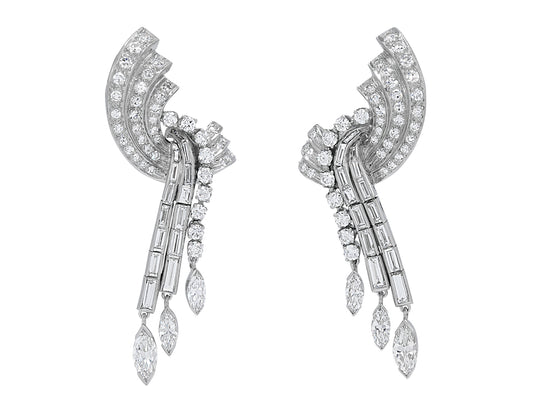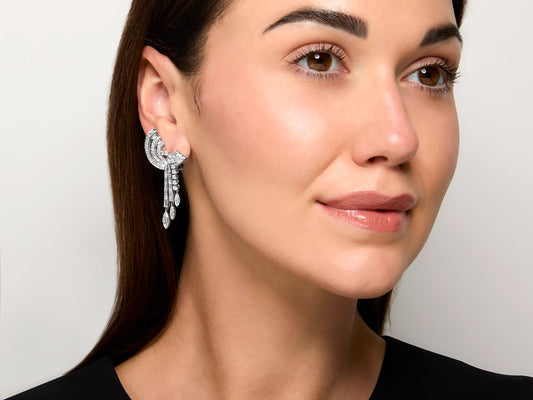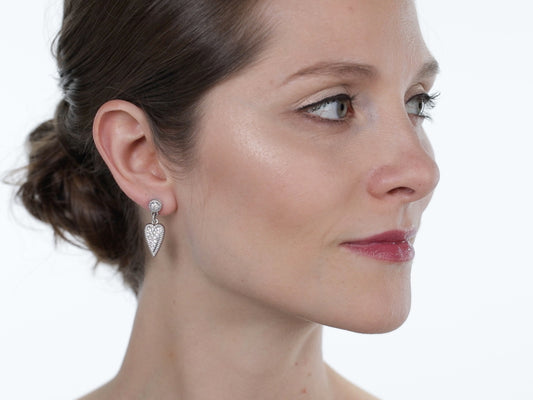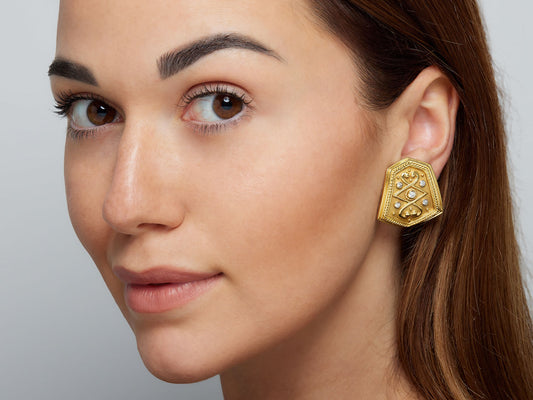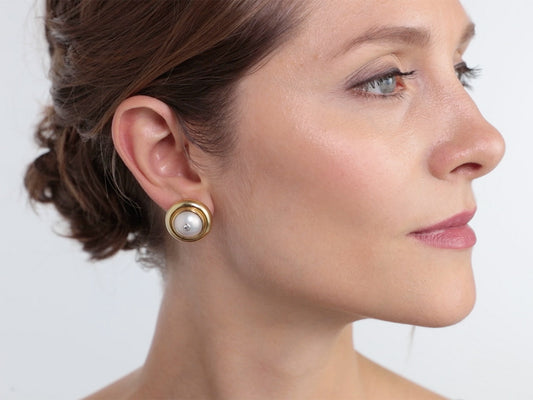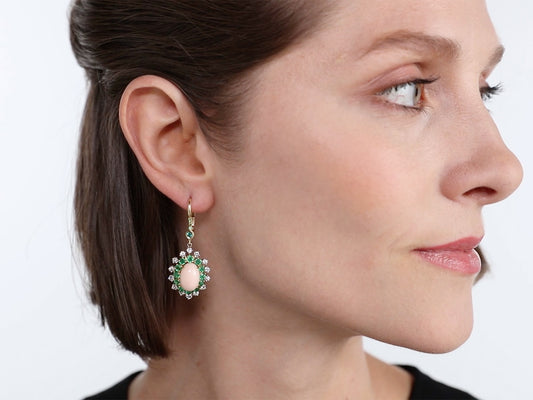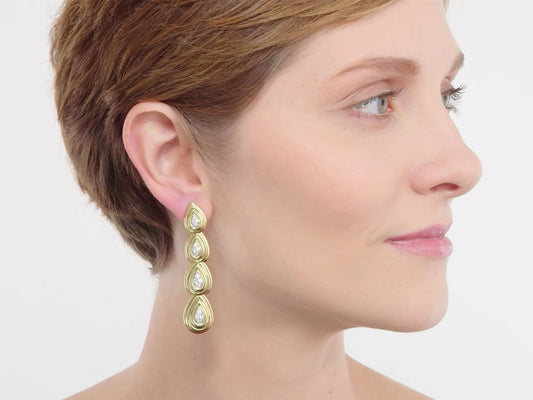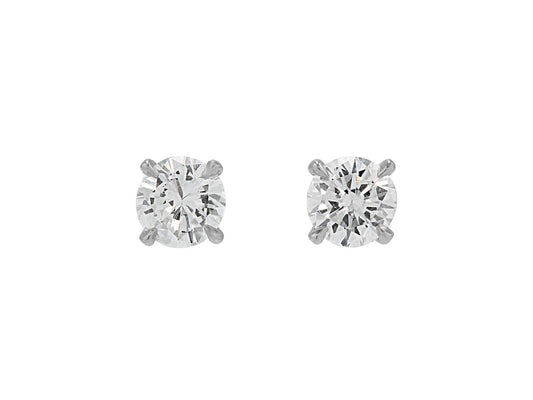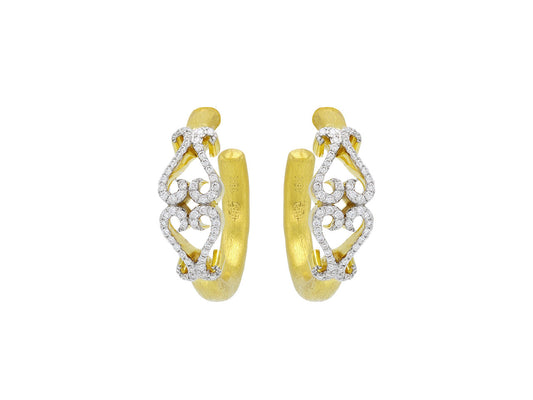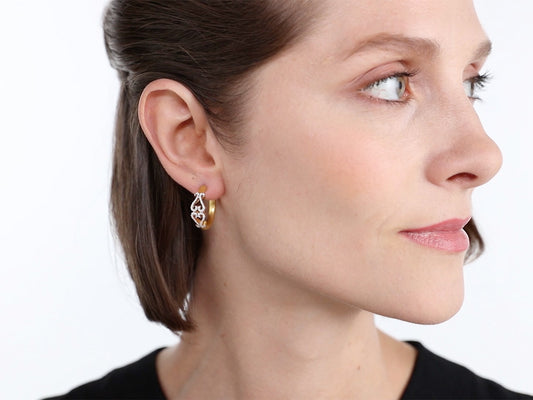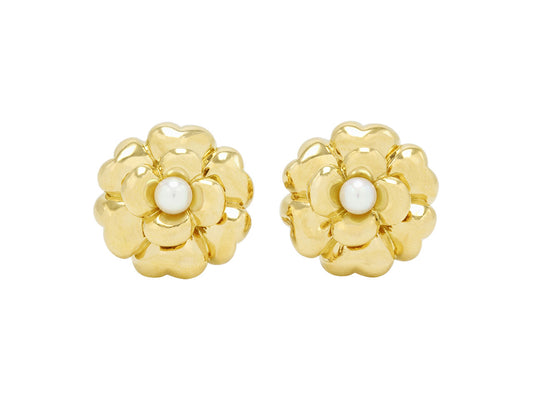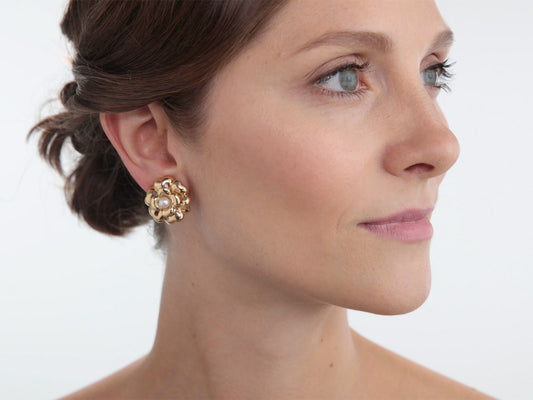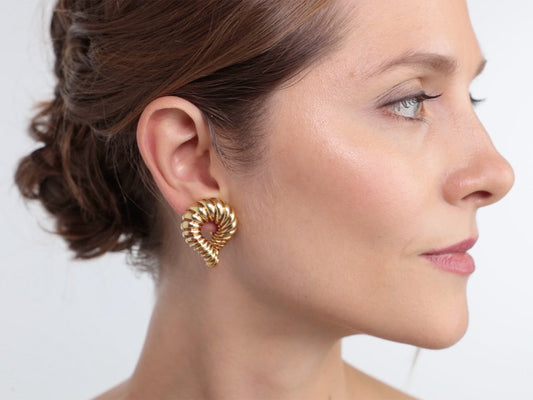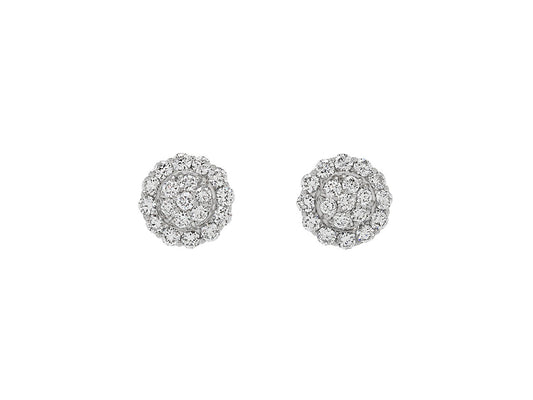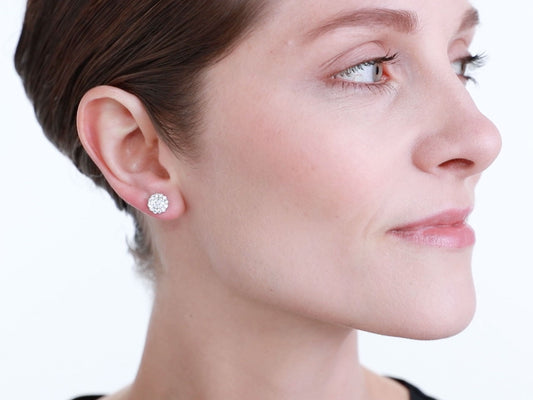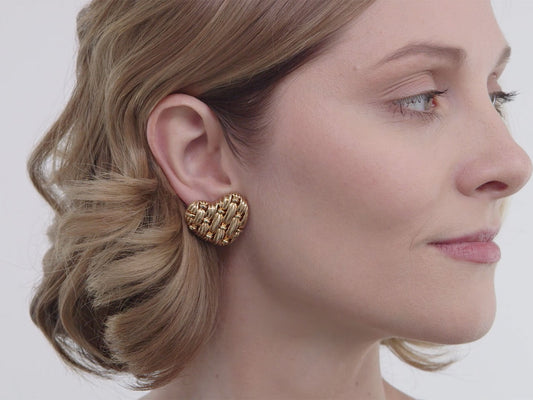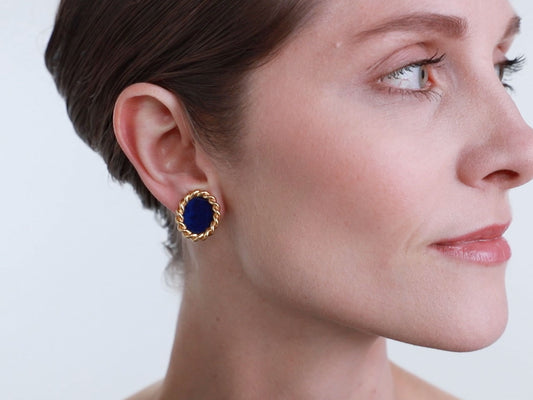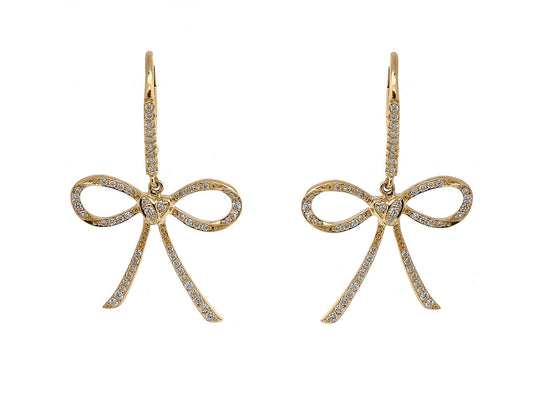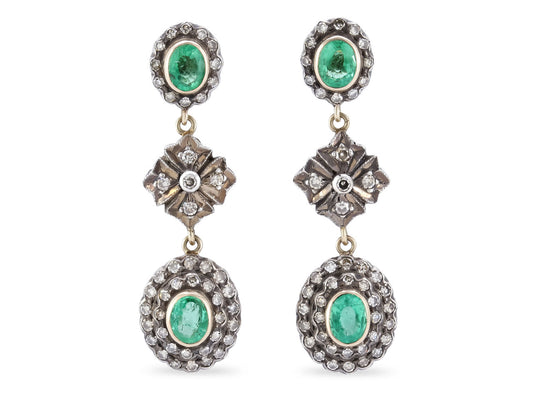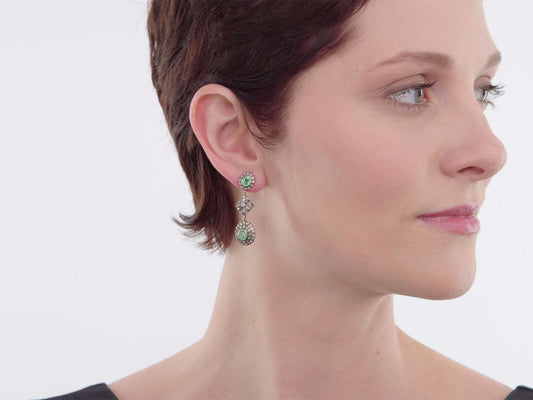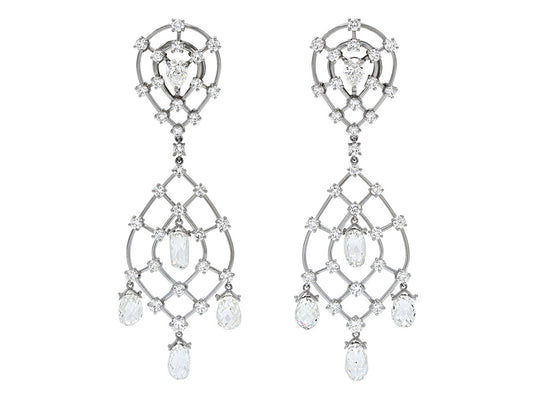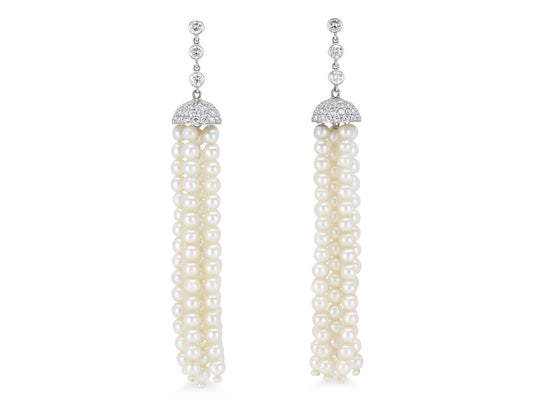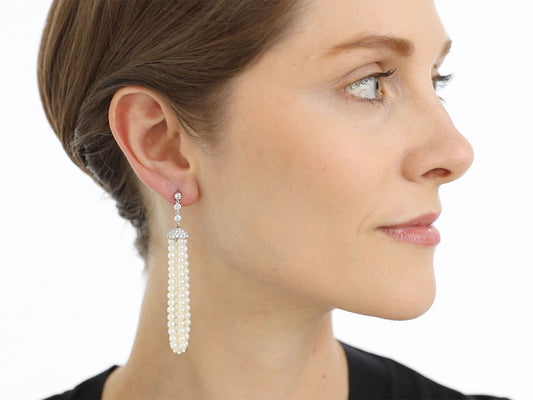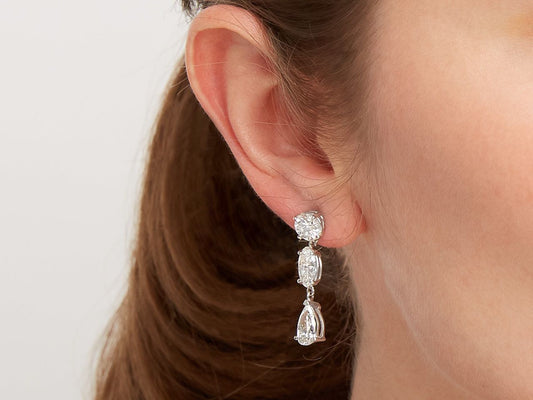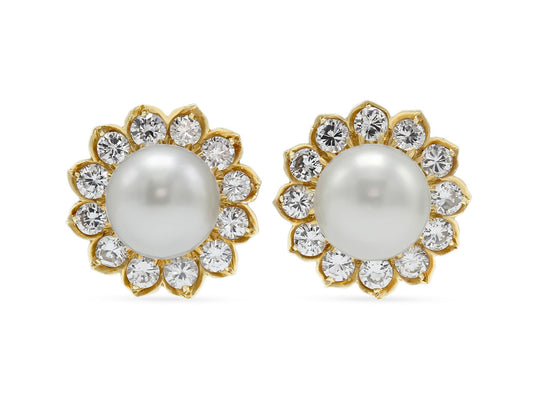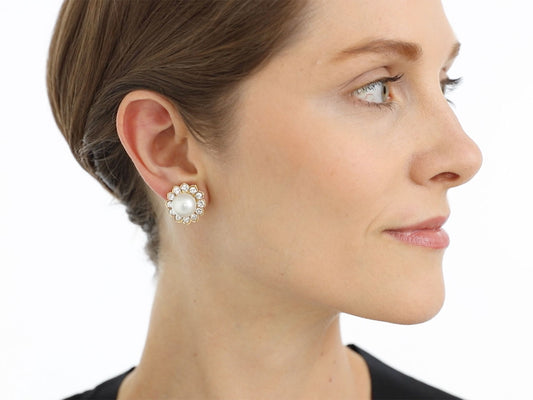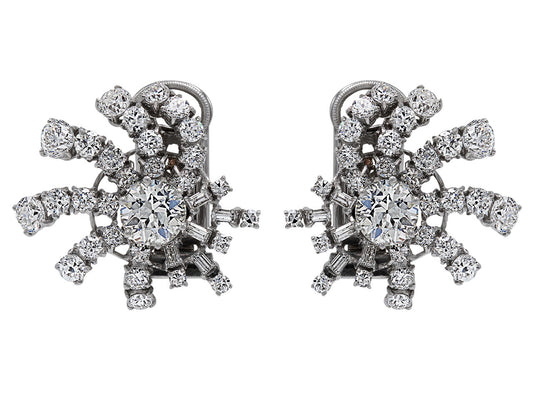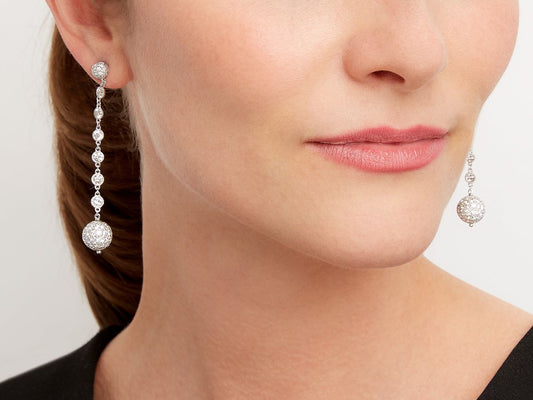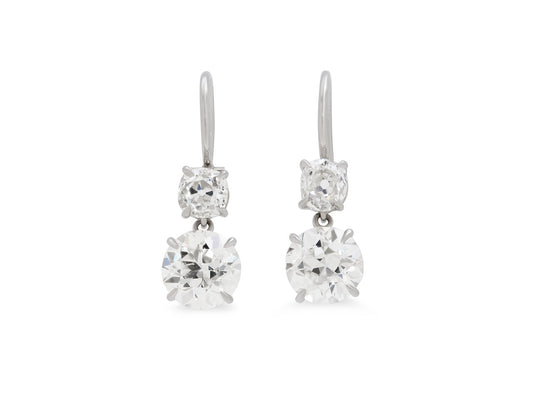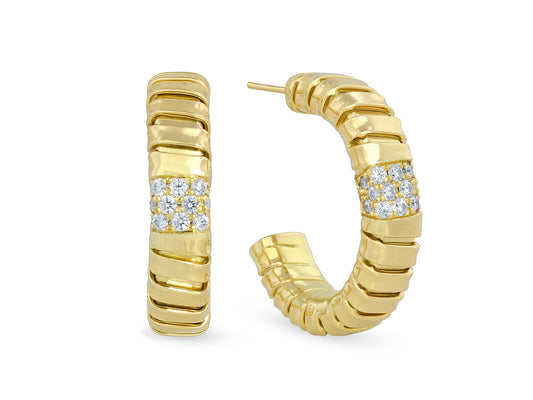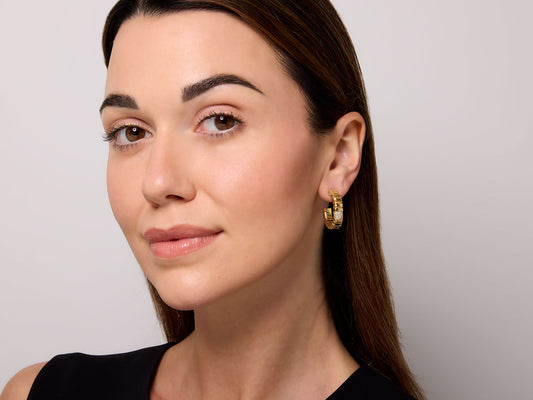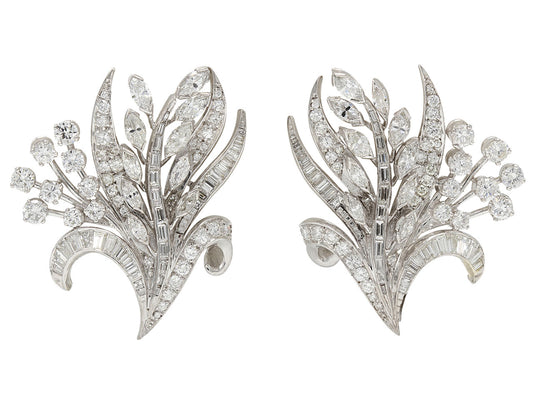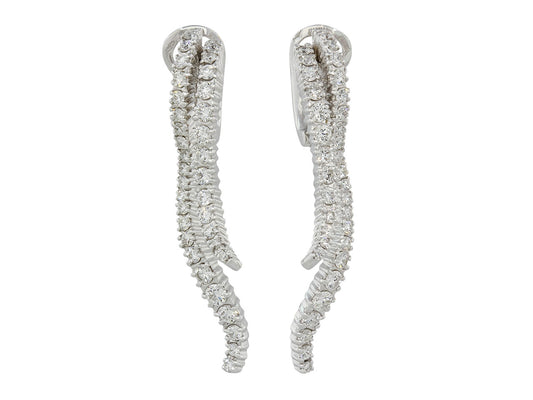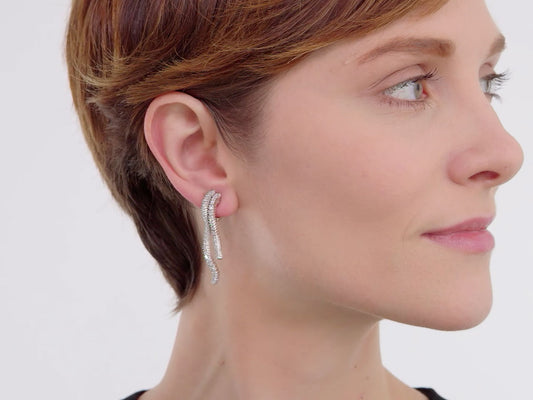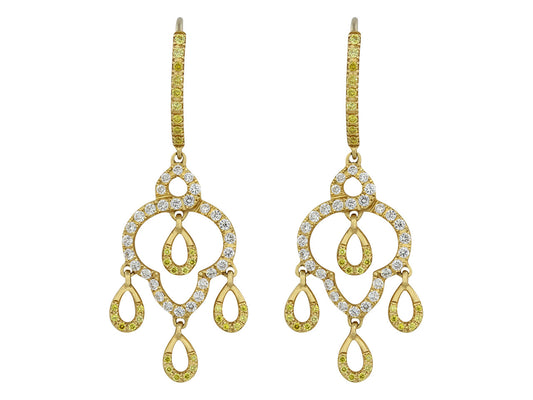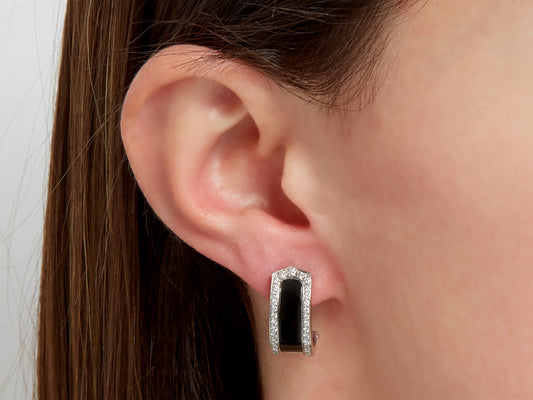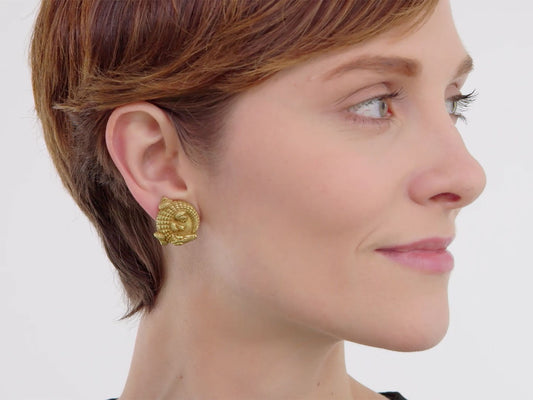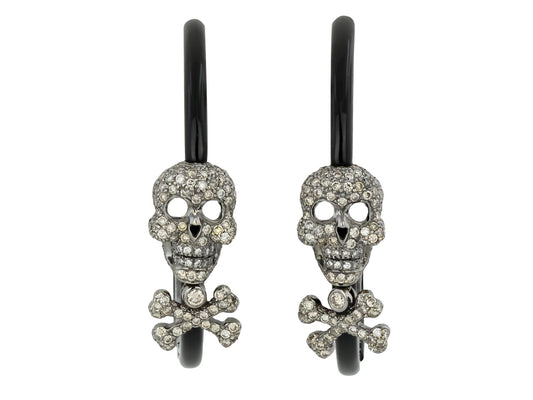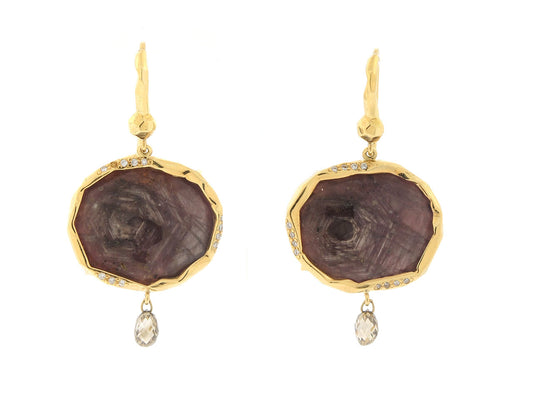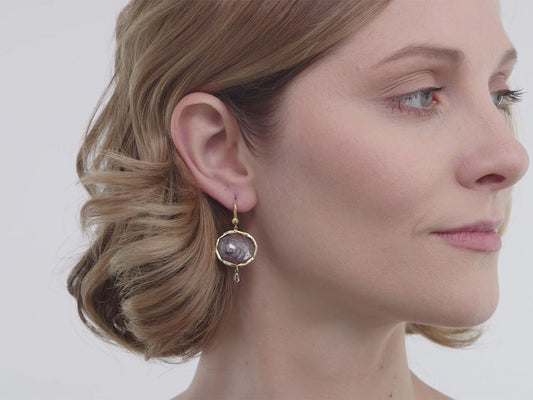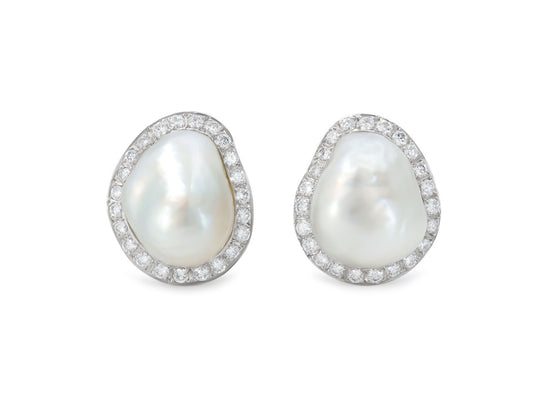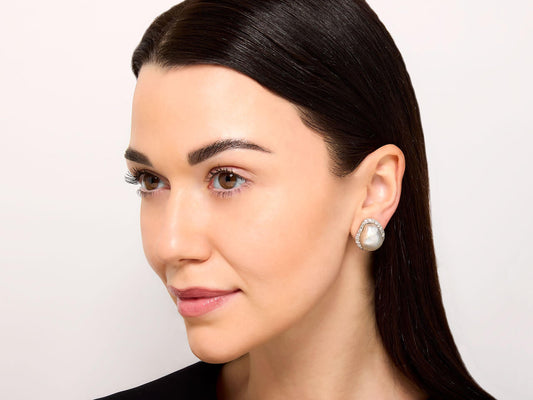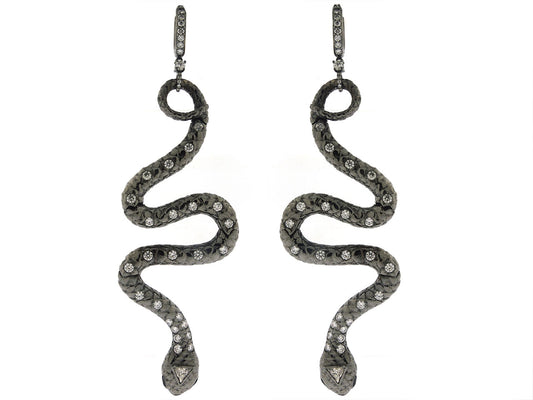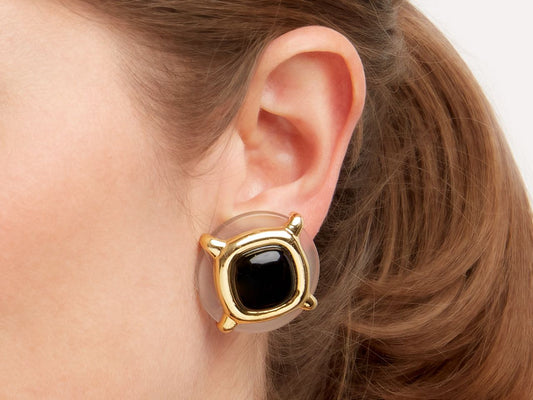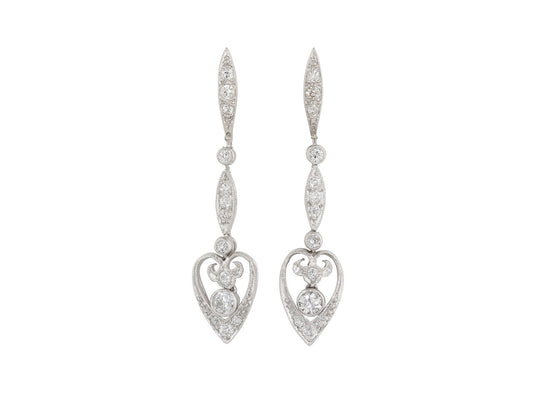-
Beladora 'Reimagined' Sapphire and Diamond Earrings in Blackened 18K Gold
EAR-513636Price $2,950PriceUnit price per -
Gold Hoop Earrings, with Diamond Tops, in 18K Gold, by Beladora
EAR-513669Price $4,950PriceUnit price per -
Gold Hoop Earrings, by Beladora
EAR-513668Price $1,650PriceUnit price per -
Hoop Earrings, Narrow, in 18K Gold, by Beladora
EAR-514153Price $3,750PriceUnit price per -
South Sea and Tahitian Pearl and Diamond Earrings in 18K White Gold
EAR-512887Price $3,450PriceUnit price per -
Beladora 'Bespoke' Pear-shape Diamond Drop Earrings, 6.52 carats total, in Platinum
EAR-513405Price $92,500PriceUnit price per -
Gurhan Diamond Earrings in 24K Gold
EAR-512979Price $2,150PriceUnit price per -
Christopher Walling Earrings in 18K Yellow and Rose Gold
EAR-513124Price $6,350PriceUnit price per -
Diamond Hoop Line in 18K Gold, by Beladora
EAR-513176Price $7,250PriceUnit price per -
Diamond Loop Earrings in 18K Gold, by Beladora
EAR-513175Price $6,950PriceUnit price per -
Hinged Elongated Hoop Earrings in 18K Gold, by Beladora
EAR-513173Price $4,350PriceUnit price per -
Door Knocker Earrings in 18K Gold, by Beladora
EAR-513172Price $2,950PriceUnit price per -
Door Knocker Earrings in 18K Gold, by Beladora
EAR-512858Price $3,550PriceUnit price per -
Ivy Sapphire and Diamond Oval Earrings
EAR-512819Price $11,850PriceUnit price per -
Kimberly McDonald Geode and Diamond Earrings in Blackened 18K
EAR-512783Price $2,250PriceUnit price per -
Black and Green Opal and Diamond Earrings in 18K White Gold
EAR-504523Price $3,850PriceUnit price per -
Irene Neuwirth Boulder Opal Earrings
EAR-512822Price $7,950PriceUnit price per -
Chimento Chalcedony Earrings in 18K Yellow Gold
EAR-512556Price $1,850PriceUnit price per -
David Webb Diamond and Black Enamel Earrings in 18K and Platinum
EAR-503285Price $16,500PriceUnit price per -
Diamond and Pink Sapphire Chandelier Earrings in 18K White Gold
EAR-512614Price $2,150PriceUnit price per -
Turquoise and Diamond Drop Earrings in 18K Gold
EAR-512508Price $2,250PriceUnit price per -
Door Knocker Earrings in 18K Gold, by Beladora
EAR-512500Price $4,050PriceUnit price per -
Beladora 'Bespoke' Turquoise and Diamond Dangle Earrings in 18K Gold
EAR-512467Price $2,850PriceUnit price per -
Beladora 'Bespoke' Red Coral and Diamond Dangle Earrings in 18K Gold
EAR-512466Price $2,250PriceUnit price per -
Parulina 'Crooked Queen' Amethyst and Diamond Earrings in Silver and 18K
EAR-512395Price $4,350PriceUnit price per -
Mid-Century Diamond Fan Earrings in Platinum
EAR-512489Price $8,800PriceUnit price per -
Chainmail Diamond Earrings in 18K Gold
EAR-512454Price $3,850PriceUnit price per -
Loree Rodkin Dreamcatcher Earrings in 18K Blackened Gold
EAR-512381Price $6,750PriceUnit price per -
Large Openwork Diamond Earrings in 18K White Gold
EAR-512373Price $3,400PriceUnit price per -
Antique Victorian Turquoise Suite of Locket Pendant/Brooch, Earrings and Bracelet
EAR-512321Price $12,500PriceUnit price per -
Oval Hoop Earrings with Diamond Tops in 18K Gold, by Beladora
EAR-512350Price $3,450PriceUnit price per -
Hoop Earrings with Diamond Tops in 18K Gold, by Beladora
EAR-512349Price $3,450PriceUnit price per -
Rhonda Faber Green Orange Opal and Diamond Drop Earrings in 18K White Gold
EAR-512198Price $3,600PriceUnit price per -
Rhonda Faber Green Diamond Dragonfly Earrings in 18K
EAR-512101Price $1,900PriceUnit price per -
Jean Mahie Ear Clips in 22K Yellow Gold
EAR-512011Price $3,600PriceUnit price per -
Rhonda Faber Green 'Diamond Dot' Dangle Earrings in 18K White Gold
EAR-512090Price $1,900PriceUnit price per -
Rhonda Faber Green 'Mini Diamond Dot' Earrings in 18K White Gold
EAR-512089Price $1,450PriceUnit price per -
Rhonda Faber Green Small 'Diamond Dot' Earrings in 18K White Gold
EAR-512088Price $1,950PriceUnit price per -
Diamond Flower Earrings in Blackened 18K Gold
EAR-504653Price $7,950PriceUnit price per -
Mid-Century Emerald and Diamond Earrings in 18K White Gold
EAR-504960Price $7,250PriceUnit price per -
Mid-Century Ruby and Diamond Flower Earrings in Platinum
EAR-511930Price $3,950PriceUnit price per -
Hammerman Brothers Diamond Dangle Earrings in Platinum
EAR-512012Price $12,500PriceUnit price per -
Antique Victorian Turquoise and Split Pearl Earrings in Low Karat Gold
EAR-511931Price $2,450PriceUnit price per -
Diamond and Pearl Earrings in 18K
EAR-511875Price $4,950PriceUnit price per -
Jade and Diamond Earrings in 18K Gold
EAR-511903Price $3,550PriceUnit price per -
Limoges Emerald and Diamond Earclips in 14K Gold
EAR-511910Price $3,150PriceUnit price per -
Lapis Earrings in 18K Gold
EAR-511592Price $1,450PriceUnit price per -
Tallarico Diamond Flower Earrings in 18K Gold
EAR-511835Price $6,350PriceUnit price per -
Seaman Schepps Onyx Shell Earrings in 14K Gold
EAR-511888Price $2,300PriceUnit price per -
Rhonda Faber Green Diamond Cross Stud Earrings in 18K White Gold
EAR-511801Price $750PriceUnit price per -
Rhonda Faber Green Diamond Double Heart Earrings in 18K White Gold
EAR-511813Price $2,750PriceUnit price per -
Stephen Webster Diamond and Blue Topaz Drop Earrings in 18K White Gold
EAR-511616Price $4,900PriceUnit price per -
Jean Mahie Earrings in 22K Gold
EAR-501305Price $7,850PriceUnit price per -
Cultured Pearl and Diamond Earrings in 14K White Gold
EAR-511561Price $1,950PriceUnit price per -
Mid-Century Diamond Dangle Earrings in Platinum
EAR-511508Price $12,500PriceUnit price per -
Diamond Heart Drop Earrings in 18K White Gold
EAR-511512Price $1,850PriceUnit price per -
Tallarico Diamond Half-Hoop Earrings in 18K Gold
EAR-511307Price $5,250PriceUnit price per -
Shield Earrings with Diamonds in 18K Gold
EAR-517776Price $4,900PriceUnit price per -
Tiffany & Co. Paloma Picasso Mabe Pearl and Diamond Earrings in 18K Gold
EAR-511051Price $2,450PriceUnit price per -
Beladora 'Reimagined' Coral, Emerald and Diamond Earrings in 18K
EAR-510531Price $2,000PriceUnit price per -
Diamond Teardrop Earrings in 18K
EAR-510568Price $5,250PriceUnit price per -
Beladora 'Bespoke' Diamond Stud Earrings, 1.12 total carats, in Platinum
EAR-510459Price $4,000PriceUnit price per -
Rhonda Faber Green Diamond Double-Heart Hoop Earrings in 22K Gold, Large
EAR-510684Price $3,800PriceUnit price per -
Rhonda Faber Green Diamond Double-Heart Hoop Earrings in 18K Gold, Small
EAR-510685Price $2,950PriceUnit price per -
Chanel 'Camellia' Pearl Earrings in 18K Gold
EAR-510589Price $5,950PriceUnit price per -
Twist Earrings in 18K Gold
EAR-510363Price $5,650PriceUnit price per -
Rhonda Faber Green Diamond Studs in 18K White Gold
EAR-509868Price $1,400PriceUnit price per -
Tiffany & Co. Signature Series 'Woven Heart' Earrings in 18K
EAR-510174Price $5,250PriceUnit price per -
Lapis Earrings in 18K Gold
EAR-510173Price $1,850PriceUnit price per -
Rhonda Faber Green Diamond 'Bow & Heart' Earrings in 18K Gold
EAR-510014Price $3,150PriceUnit price per -
Emerald and Diamond Earrings in Silver over 18K Gold
EAR-501138Price $2,750PriceUnit price per -
Diamond Briolette Chandelier Earrings in Platinum
EAR-503476Price $14,650PriceUnit price per -
Kieselstein-Cord Ruby and Diamond Hoop Earrings in Platinum
EAR-509727Price $5,250PriceUnit price per -
Beladora 'Reimagined' Pearl and Diamond Tassel Earrings in Platinum
EAR-509711Price $3,750PriceUnit price per -
Diamond Dangle Earrings, 5.91 total carats, in Platinum
EAR-503084Price $29,750PriceUnit price per -
Tallarico Pearl and Diamond Earrings in 18K Gold
EAR-509613Price $3,550PriceUnit price per -
Mid-Century Diamond Earrings in Platinum
EAR-502959Price $9,150PriceUnit price per -
Diamond Dangle Earrings in 18K White Gold
EAR-509412Price $5,650PriceUnit price per -
Beladora 'Bespoke' Old-cut Diamond Earrings in Platinum
EAR-509267Price $21,750PriceUnit price per -
'Veneto' Diamond Hoop Earrings with Diamond Terminals in 18K Gold
EAR-509003Price $5,950PriceUnit price per -
'Veneto' Gold and Pavé-set Diamond Hoop Earrings in 18K Gold
EAR-509004Price $4,250PriceUnit price per -
Mid-Century Diamond Flower Earrings in Platinum
EAR-509200Price $14,750PriceUnit price per -
Damiani Diamond Earrings in 18K White Gold
EAR-506275Price $4,250PriceUnit price per -
Alan Friedman Yellow and White Diamond Dangle Earrings in 18K
EAR-506238Price $2,350PriceUnit price per -
Cartier 'Double C' Black Ceramic and Diamond Earrings in 18K
EAR-506209Price $9,550PriceUnit price per -
Kieselstein-Cord Alligator Earrings in 18K
EAR-506201Price $3,750PriceUnit price per -
Lydia Courteille Diamond and Enamel Skull Earrings in 18K
EAR-506029Price $4,950PriceUnit price per -
Mimi So Sapphire Oval Earrings in 18K
EAR-505957Price $2,750PriceUnit price per -
Trio South Sea Pearl and Diamond Earrings in 18K
EAR-505924Price $4,950PriceUnit price per -
Diamond Snake Earrings in Titanium
EAR-505783Price $4,550PriceUnit price per -
Black Sapphire Diamond Hoop Earrings in 18K
EAR-505697Price $2,150PriceUnit price per -
Jean Mahie and Neiman Marcus Kunzite and Diamond Earrings in 22k
EAR-505675Price $7,950PriceUnit price per -
Cartier Aldo Cipullo Crystal and Onyx Earrings in 18K Gold
EAR-505598Price $9,950PriceUnit price per -
Diamond Swirl Earrings in 18k
EAR-505573Price $3,850PriceUnit price per -
Diamond Dangle Earrings in Platinum
EAR-63041Price $1,950PriceUnit price per
FAQs
What are vintage earrings?
The term vintage earrings applies to a wide range of pieces typically more than 20 years old and back to the Georgian period in the early 1700s. The term vintage refers not only to the age of a jewel, but also to the specific era of design including the Victorian, Edwardian, Art Nouveau, Art Deco, Retro, and mid-century periods of the 1950s and 60s. Beladora features hundreds of pieces from all these eras and the finest makers, including Cartier, Van Cleef & Arpels, Bulgari, Tiffany and more.
Under the category of vintage are found antique earrings which are generally identified as 100 years of age or more. Vintage and antique earrings feature designs, quality material and attention to detail often missing in mass-manufactured items of today. Rarity, painstaking workmanship and intricate design work are the hallmarks of vintage earrings representing the originality and quality of a bygone age.
How does Beladora verify the authenticity of a piece?
Authenticating pieces of jewelry requires more nuanced expertise. Many thousands of pieces of jewelry have passed through our hands for over 40 years from every era and every maker. This familiarity enables us to know what a piece should look and feel like and if it has the expected quality of material and workmanship, the accurate makers marks and the correct signature in all the right places. Indeed, one of the easiest ways non-experts can be fooled is to assume a designer piece of jewelry is truly by that maker as pieces by commercial manufacturers are often outright fakes or signed fraudulently by a third party.
In practice, we first look at the front and back of a bracelet, ring or brooch, turning it over in our hands to see that the workmanship on the reverse is just as fine as the detail on the front. Using the jeweler’s important tool, the loupe, we look carefully at many different touchpoints including the precision with which the diamonds are mounted in their settings, the manner in which gold or platinum links are connected to each other, the quality of the azuring, a most difficult and refined aspect of metalwork, the fineness of the material and we look for flawless polish.
If we have any doubts whatsoever as to authenticity, we submit the piece to the firm itself, be it Cartier, Van Cleef & Arpels, Verdura, David Webb and others. We also request the original bill of sale, box and papers for those items most commonly faked such as Cartier Love brackets and VCA Alhambra pieces. And just as banks know their customers, we, too, ensure we know enough about our clients to assure ourselves of their ownership and provenance.
Our team of GIA-certified jewelry experts has such a well-regarded reputation in the international jewelry industry that we are frequently called upon to advise auction houses, appraisers and other dealers in matters of authenticity and value.

